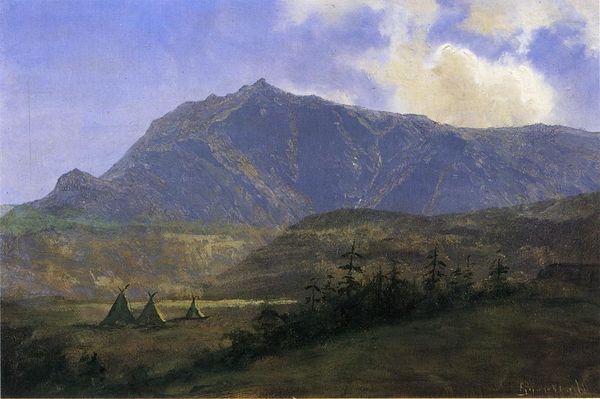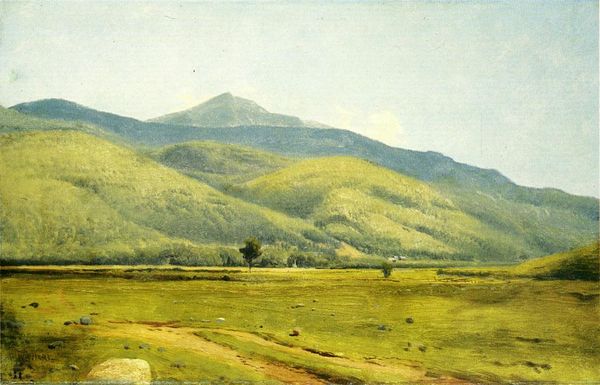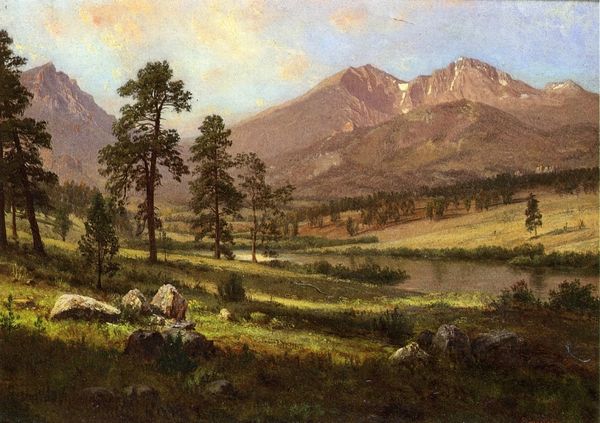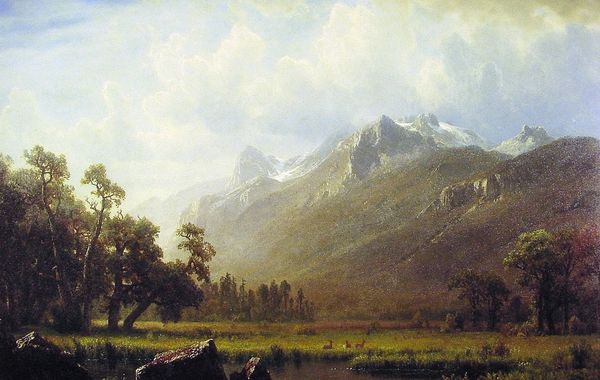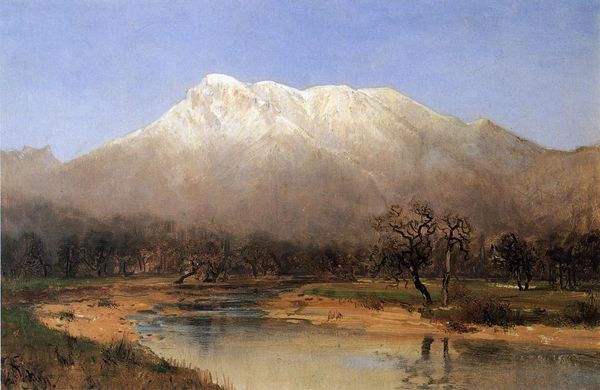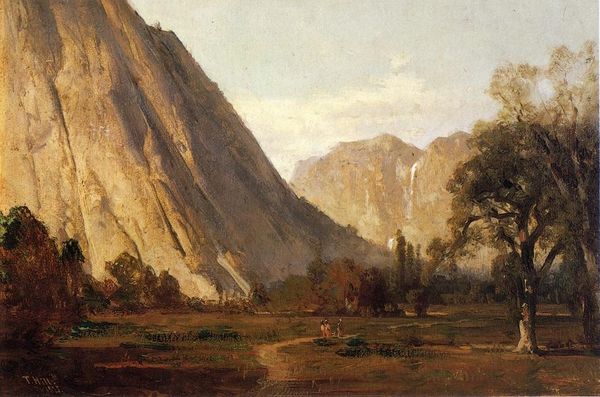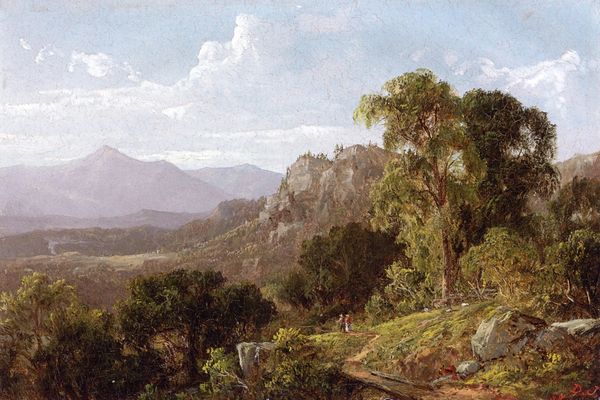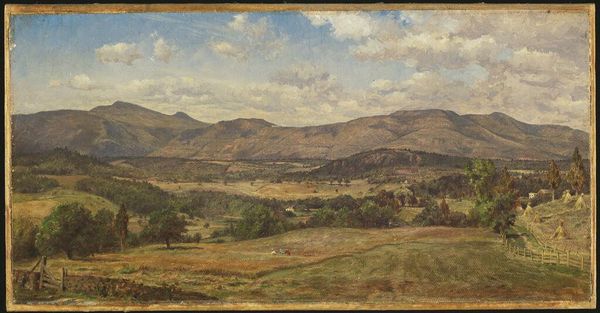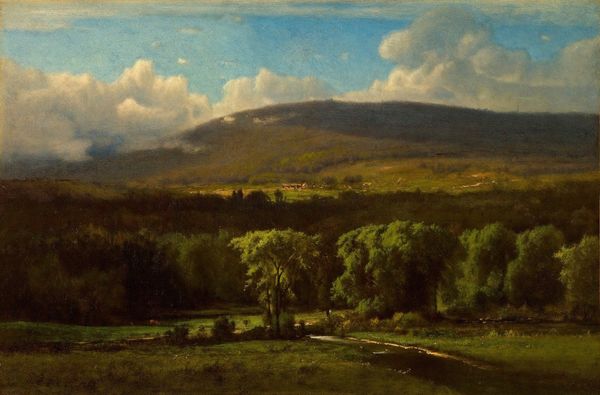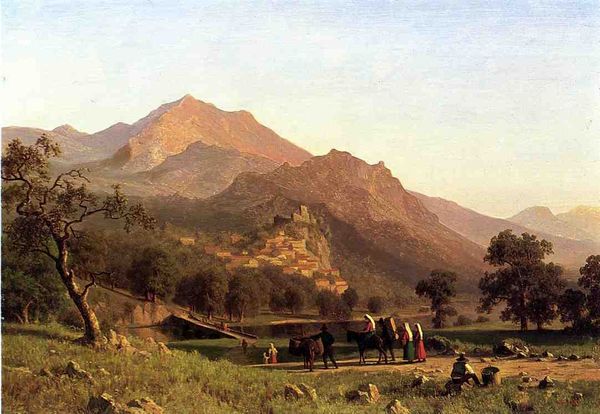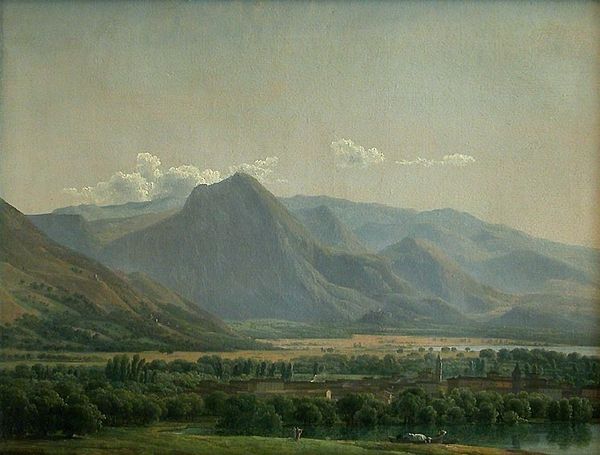
Dimensions: 48.3 x 65.7 cm
Copyright: Public domain
Editor: Here we have Albert Bierstadt's "Moat Mountain Intervale, New Hampshire" painted in 1862. It’s oil on canvas and, at first glance, strikes me as a pretty conventional landscape painting, very peaceful and serene. What’s your take? Curator: Consider the sheer physicality of Bierstadt hauling his equipment en plein air. Oil paints, canvases, easels...these were laborious undertakings! Then, what was he *doing* in this rural place, so far from the markets of art consumption? Editor: Right, the materials themselves, and the act of bringing them here… I hadn't really considered that labor. It does add another layer to how I understand the work. The very means of production shape the outcome. Curator: Precisely. And who benefits from this idyllic portrayal of the countryside? This wasn't merely a celebration of untouched wilderness. Look at the ways that land use and property are implied through the placement of fences. Who owns that land? Editor: The fencing! I was so focused on the romantic landscape I completely missed how much space is carved out, delineated for possible development, consumption... Curator: Exactly! It’s easy to get lost in the romanticism, but considering the materiality, labor, and socioeconomic context embedded in every brushstroke shifts our understanding. What are your final thoughts on the painting now? Editor: Seeing it through a materialist lens really opened my eyes. It is not only a depiction of beauty, but a material product shaped by labor, access, and implicitly, property ownership. Thanks for shedding a different light on the making of the landscape!
Comments
No comments
Be the first to comment and join the conversation on the ultimate creative platform.
